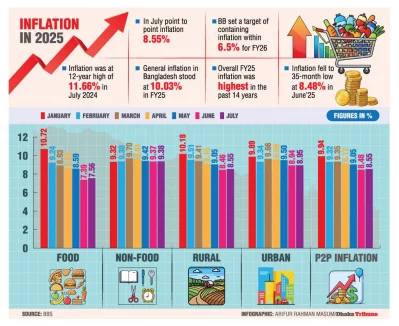Kenya’s economy received a welcome relief in September 2025 as the country’s inflation rate dropped to 5.7%, according to the latest data from the Central Bank of Kenya (CBK).
The decline from August’s 6.3% was largely attributed to a decrease in food and fuel prices, with maize flour, cooking oil, and petrol leading the reductions. This comes as global oil prices stabilized and domestic food supplies improved due to favorable rainfall.
Key Highlights:
-
Food Index: Prices of maize flour, vegetables, and sugar dropped slightly, easing the cost of living for households.
-
Fuel & Energy: Reduced pump prices of petrol and diesel helped lower transport and electricity costs.
-
Core Inflation: Non-food, non-fuel items remained stable, showing improved macroeconomic balance.
CBK Governor Kamau Thugge stated that the inflation drop is within the government’s target range of 2.5% to 7.5%, giving room for potential adjustments in the country’s monetary policy.
However, economic experts have warned that risks remain, especially with global oil market volatility and looming El Niño weather patterns, which could affect local food production.
The lower inflation is expected to boost consumer spending, reduce pressure on interest rates, and encourage investment across key sectors such as retail, manufacturing, and real estate.
For ordinary Kenyans, the news provides short-term relief after months of rising costs of living. Businesses, too, are optimistic that the trend could spur economic recovery as the government pushes forward with its Bottom-Up Economic Transformation Agenda (BETA).










